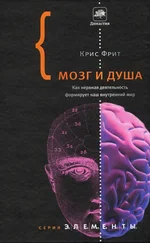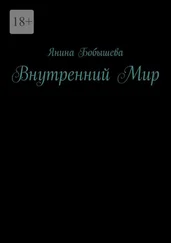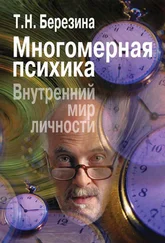Jung, C. G. (1937b) Psychology and Religion. Collected Works 11.
Jung, C. G. (1946) Psychology of the Transference, Collected Works 16.
Jung, C. G. (1947) On the Nature of the Psyche Collected Works, 8.
Jung, C. G. (1949) The Psychology of the Child Archetype, Collected Works 9/1.
Jung, C. G. (1951) Aion. Collected Works 9/2.
Jung, C. G. (1952) Answer to Job. Collected Works 11.
Jung, C. G. (1954) On the Nature of the Psvche, Collected Works 8.
Jung, C. G. (1955) Mysierium Coniunctionis, Collected Works 14.
Jung, C. G. (1958) Schizophrema. Collected Works 3.
Jung, C. G. (1977) C. G– Jung Speaking, ed. Wm. McGuire and R. F. C. Hull, Princeton N. J.: Princeton University Press.
Jung, C. G. (1989) Notes of the Seminar Given in 1925, ed. Wm. McGuire, Princeton N. J.: Princeton University Press.
Kalsched, D. (1980) Narcissism and the Search for Interiority, Quadrant l3 (2): 46–74.
Kalsched, D. (1981) Limbo and the Lost Soul in Psychotherapy, Union Seminar Quarterly Review XXXVLI (2 and 3): 95–107.
Kalsched, D. (1985) Fire from the Gods: How Will Prometheus Be Bound – an Essay on Soviet-American Relations. Quadrant 18 (2): 71–92.
Kalsched, D. (1991) The Limits of Desire and the Desire for Limits in Psychoanalytic Theory and Practice, in F. Halligan and J. Shay (e d s) Fires of Desire: Erotic Energies and the Spiritual Quest, New York: Crossroads Press.
Kast, V. (1992) The Dynamics of Symbols: Fundamentals of Jungian Psychotherapy, trans. S. Schwarz. New York: Fromm Publications. Kavaler-Adler, S. (1993) The Compulsion to Create: A Psyhoanalytic Study of Women Artists. New York: Routledge.
Kernberg, 0., Selzer. M., Koenigsberg, H., Can, A. and Appelbaum, A. (1989) Psychodynamic. Psychotherapy of Borderline Patients, New York: Basic Books.
Kerr, J. (1993) А Most Dangerous Method: The Story of Jung. Freud. and Sabina Speilrein. New York: Alfred Knopf.
Khan. M. (1963) The Concept of Cumulative Trauma, in M. Khan The Privacy of the Self. New York: International Universities Press: 42–58.
Khan, M. (1974) Towards an Epistemology of Cure, in M. Khan The Privacy of the Self. New York: International Universities Press: 93–98.
Khan, M. (1983) Beyond the Dreaming Experience, in M. Khan Hidden Selves. New York: International Universities Press: 42–50.
Klein, M. (1934) A Contribution to the Psychogenesis of Manic-depressive States, in M. Klein Contributions to Psychoanalysis 1921–1949, London: Hogarth Press: 282–310.
Klein, M. (1946) The Early Development of the Conscience in the Child, in M. Klein Contributions to Psychoanalysis. London: Hogarth Press: 67–74.
Kohut, H. (1971) The Analysis of the Self, New York: International Universities Press.
Kohut, H. (1977) The Restoration of the Self. New York: International Universities Press.
Kohut, H. (1984) How Does Analysis Cure? Ed. A. Goldberg, Chicago, 111.: University of Chicago Press.
Kristeva, J. (1989) Black Sun: Depression and Melancholia. New York: Columbia University Press.
Krystal, H. (1988) Integration and Self Healing. New Jersey: The Analytic Press.
Kugler, P. (1986) Childhood Seduction: Physical and Emotional, Spring, Dallas: Spring Publications: 40–60.
Langs, R. (1976) The Bipersonal Field, New York: Jason Aronson.
Leonard, L. S. (1985) The Wounded Woman: Healing the Father-Daughter Relationship, Boston. Mass.: Shambhala Press.
Leonard, L. S. (1986) On the Way to the Wedding. Boston, Mass.: Shambhala Press.
Leonard, L. S. (1989) Witness to the Fire: Creativity and the Veil of Addiction. Boston, Mass.: Shambhala Press.
Leonard, L. S. (1993) Meeting the Madwoman. New York: Bantam Books.
Masson, J. (1984) The Assault on Truth: Freud’s Suppression of the Seduction Theory, New York: Farrar. Strauss & Giroux.
Masterson, J. (1976) Psychotherapy of the Borderline Adult, New York: Brunner Mazel.
Masterson, J. (1981) The Narcissistic and Borderline Disorders: An Integrated Develop mental Approach, New York: Brunner Mazel.
McGuire, W. (1974) (ed.) The Freud/Jung Letters, trans. R. Manheim and R. F. C. Hull, Princeton, N. J.: Princeton University Press.
McDougaIl, J. (1985) Theaters of the Mind, New York: Basic Books.
McDougall, J. (1989) Theaters of the Body, New York: W. W. Norton & Co.
Mead, G R. S. (1967) The Doctrine of the Subtle Body in Western Tradition, Wheaton, Ill.: Theosophical Publishing House for Quest Books.
Modell, A. (1958) – The Theoretical Implications of Hallucinatory Experiences in Schizophrenia, Journal of the American Psychoanalytic Association. 6:442–480.
Modell, A. (1976) «The Holding Environment and the Therapeutic Action of Psycho-analysis, Journal of American Psychoanalytic Association. 24: 285–307.
Mogenson, G. (1989) God is a Trauma: Vicarious Religion and SoulMaking. Dallas, Тех.: Spring Publications.
Moltmann, J. (1974) The Crucified God, SCM Press, p. 151, quoted in Garrison, J. The Darkness of God: Theology after Hiroshima. Grand Rapids, Mich.: William B. Eerdman’s Publishing Co. (1982).
Mudd, P. (1989) The Dark Self: Death as a Transferential Factor in Proceedings of the 11 th International Congress of Analytical Psychology, Paris. 1989. Einsiedeln: Daimon Verlag: 103–118.
Neumann, E. (1956) Amor and Psyhe: The Psychic Development of the Feminine, trans. R. Manheim, Princeton, N. J.: Princeton University Press.
Neumann, E. (1969) Depth Psychology and a New Ethic. New York: Harper Torchbooks. Neumann, E. (1976) The Child, New York: Harper Colophon Books. Press.
Odier. C. (1956) Anxiety– and Magic Thinking, trans. M-L. Schoelly and M. Sherfey, New York: International Universities Press.
Ogden, Т. Н. (1986). The Matrix of the Mind: Object Relations and the Psychoanalytic Dialogue, New Jersey: Jason Aronson.
O’Grady, J. (1989). The Prince of Darkness, Longmead: Element Books.
Otto, R. (1958) The Idea of the Holy, trans. J. Harvey, New York: Oxford University Press.
Palmer, R. E. A. (1970) Janus, in R. Cavendish (ed.) Man, Myth and Magic: An Illustrated Encyclopedia of the Supernatural, New York: Cavendish Corporation (1970): 483–484.
Perry, J. W. (1976) Roots of Renewal in Myth and Madness, San Francisco: Jossey-Bass.
Pinkola Estes, C. (1992) Women Who Run with the Wolves. New York: Ballantine Books.
Plant, F. (1966) Reflections About Not Being Able to Imagine, in Analytical Psychology: A Modem Science ( Library of Analytical Psychology, vol. 11, London: Heinemann (1973): 128–144.
Proner, В. (1988) Envy of Oneself, Adhesive Identification and Pseudo-Adult States, Journal of Analytical Psychology. 33: 143–163.
Proner, В. (1986) Defenses of the Self and Envy of Oneself, Journal of Analytical Psychology.31: 275–279.
Radin, P. (1976) The Trickster: A Study in American Indian Mythology, New York: Schocken Books.
Redfearn, J. (1992) The Exploding Self: The Creative and Destructive Nucleus of the Personality. Wilmette, Ill.: Chiron Publications.
Ross, C. (1989) Multiple Personality Disorder: Diagnosis, Clinical Features and Treatment. New York: John Wiley & Sons.
Ross, L, (1991) Cupid and Psyche: Birth of a New Consciousness, in M. Stein and L. Corbett (eds) Psyche’s Stories: Modem Jungian Interpretations of Fairy Tales, Wilmette, Ill.: Chiron Publications: 65–90.
Читать дальше
Конец ознакомительного отрывка
Купить книгу











